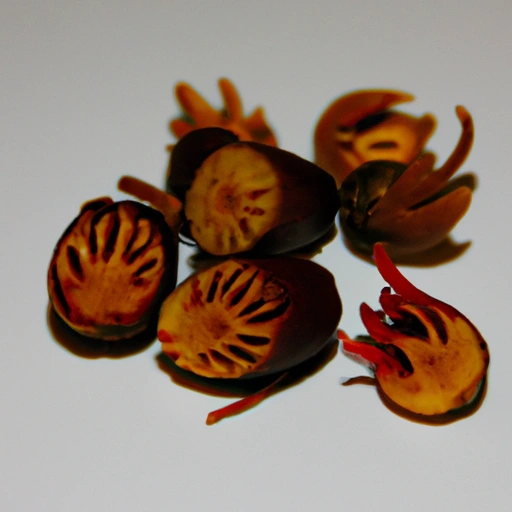Mace
Description

Common uses
Mace is commonly used to flavor bakery items, meat preparations, stews, and sauces. It also finds a place in the preparation of certain varieties of pickles and is a component of spice blends like garam masala and curry powders.
Nutritional value
Calories
Mace is calorie-dense due to its high essential oil content. A teaspoon (2 grams) provides approximately 14 calories.
Protein
Protein content in mace is minimal, with a teaspoon containing around 0.16 grams.
Fat
Mace contains about 1 gram of fat per teaspoon, mainly consisting of monounsaturated and saturated fats.
Carbohydrates
Carbohydrates are present in small amounts, with a teaspoon of mace offering about 1.5 grams.
Vitamins
Mace is a source of vitamins such as vitamin A, vitamin C, and some B-complex vitamins like folate.
Minerals
It contains minerals like calcium, iron, magnesium, phosphorus, potassium, sodium, and zinc in trace amounts.
Health benefits
Mace may offer various health benefits, such as improving digestion, possessing anti-inflammatory properties, and contributing to brain health. However, more research is needed to fully understand its medicinal properties.
Potential risks
Excessive consumption of mace can lead to side effects such as nausea, hallucinations, and palpitations due to its potent active compounds. It should be used in moderation, and individuals with specific health conditions or those who are pregnant should consult a healthcare professional before use.
Common recipes
Mace is used to flavor dishes such as cakes, puddings, custards, soups, and meat preparations. It is also a popular addition in spice mixtures and masalas.
Cooking methods
Mace can be used both in its whole form, often infused into liquids, or ground into a powder and added during the cooking process.
Pairing with other ingredients
It pairs well with ingredients like potatoes, sweet potatoes, cheese, onions, meats, and various fruits, particularly apples and pears.
Summary
Mace is a versatile and flavorful spice derived from the nutmeg tree, with a history as rich as its taste. It adds a warm, slightly sweet flavor to various dishes and has been used both for its culinary and potential health benefits. However, caution is advised due to its potent nature. With its intricate flavor profile, mace can elevate simple recipes to new heights.